SHINING 3D has been supporting a graduate from the Design Academy of Eindhoven for the 2019 Graduation Show during 2019 Dutch Design Week in Eindhoven, Netherlands
Table of Contents
Fast Forward: Design & Production by Means of 3D-Technology
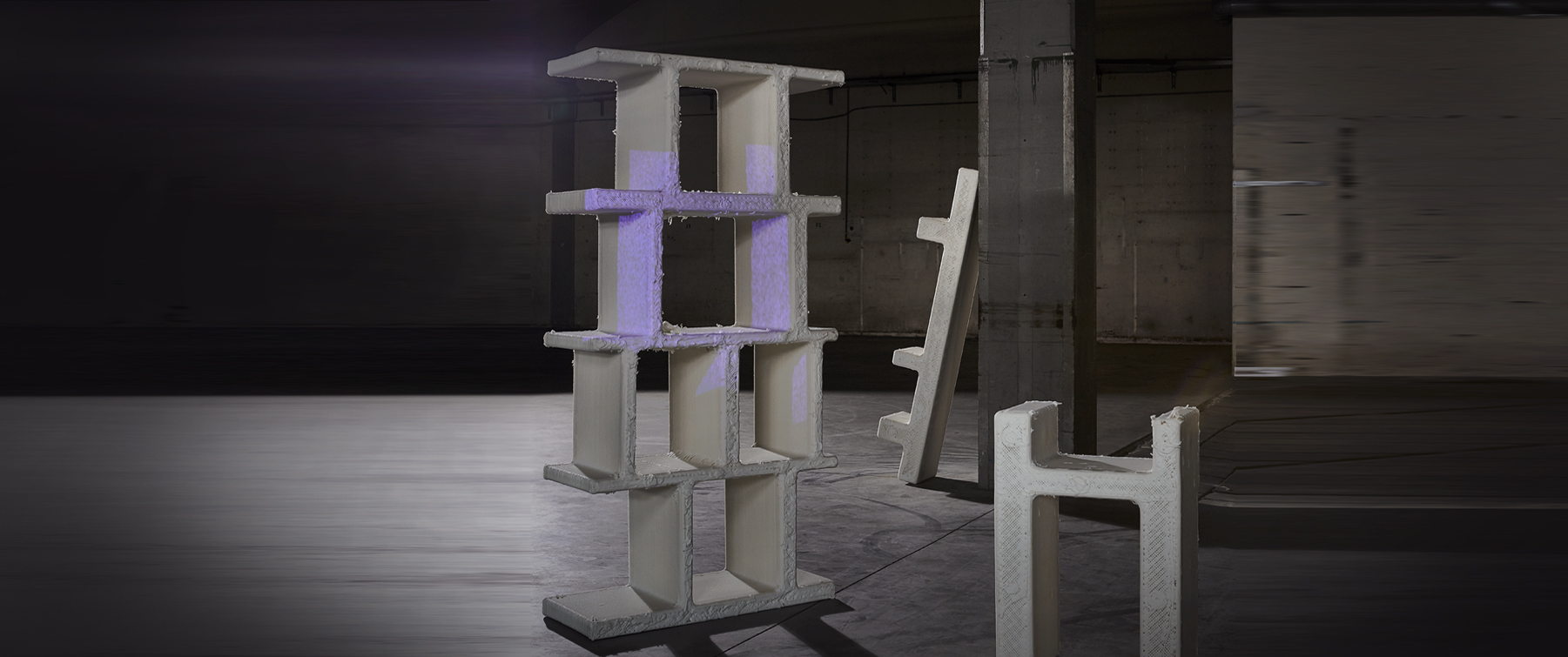
“The global success of design has given the profession a position in which designers have unparalleled influence and responsibilities for the future of the planet and humankind. As an institute, Design Academy Eindhoven (DAE) has to stretch the horizon of design education to correspond to the realities of a much more diverse community of students, tutors, readers and partners. …”
Design Academy Eindhoven, Institutional Plan 2019-2024
Design Academy Eindhoven is known for its global relevance and influence into the broadest reaches of the design field. The Graduation Show, taking place annually during Dutch Design Week, is a focal point in setting the school’s agenda. In 2019, the iconic factory setting of the Campina milk factory became the background for yet another radical turning point in the show’s history.
FAST FORWARD – THE ARTIST
Matteo dal Lago moved to Eindhoven five years ago to become a designer. Leaving his home country, Italy, to pursue higher education abroad at the prestigious design school, he gained a deep interest in modern technology and has recently graduated from the branch “Man and Leisure” with a project titled “Fast Forward” featuring 3D Scanning and 3D Printing Technologies.
Matteo´s vision is to work with technologies in order to make their end products look like casual craftsmanship. He is delivering one really interesting and easy approach to 3D Technologies. What he does as a professional is to create a bridge between technology and craft by means of critical thinking.
Entering the exhibition halls, the visitor immediately grasps the immense creativity and individuality of the 200 exhibits in the old Campina milk factory. But there is something else: something underlining the relevance this design school claims on the global stage. This is not simply creativity for the reason of idleness. One can clearly discover a message and a red thread of critical thinking in every piece of artwork. Matteo´s project is no exception. During the world-famous exhibition he is displaying furniture of a special kind – let´s take a closer look together!
Matteo´s exhibition space is equipped with different-sized objects of similar shapes. The different sizes also consist of different materials each. There are red wooden brick-compiled structures, Stereolithography 3D-Prints and FDM 3D-Prints. Shining3D´s Multifunctional Handheld 3D Scanner is a part of this curious ensemble as well.
FAST FORWARD – THE CONCEPT
The basis of the project is a simple experiment:
A modular construction system is created of straight wooden bricks that can be arranged one next to the other in order to create closed vertical shapes. These shapes are then 3D-scanned creating so a unique and joined object. The resulting STL-file is further processed by a 3D-printer. The printed model is molded in plaster. This step allows the artist to reproduce the object casting it in clay.
Matteo realized that he could use the main characteristics of this process to create a complete production cycle in which collaboration between man and machines play the main role in order to create a collection of furniture.
Before he contacted Shining3D to check if a cooperation would be possible, he did not have experience with professional 3D-Scanning Technology, Matteo says. He was merely trying out some basic phone- and tablet 3D-Scanning tools which did not seem to fit his project perfectly. The biggest problem was, that the output data of such scanning solutions was quite huge. If something was scanned by means of such a device, one could barely send the data to the 3D-printer, claims the young designer. He is very happy about the possibility to cooperate with SHINING 3Dfor this project.
“I realized that the EinScan Multifunctional Handheld 3D-Scanner from SHINING 3D was the device I needed to make my project possible. It is precise, fast and intuitive. It gives me the possibility to work intuitively and have a fast and trustable feedback on my decisions and my progress.”
Once in possession of the Scanner, it took Matteo a few weeks to finalize the concept. In the end he developed a 3-step production process which he named “build-scan-print”
BUILD – SCAN – PRINT
“My production process consists of three main steps. Building, 3D-Scanning and 3D-Printing. The project relies on 2 core intentions: firstly, every step allows you to create uniqueness within the object you are creating and secondly, I am intentionally collaborating with machines. In this case I am working with a 3D Scanner, a SHINING 3D EinScan Multifunctional Handheld 3D-Scanner and 3D-Printers, the Shining EP-A350 Stereolithography 3D-Printer and a large scale FDM 3D-Printer. In this project, they are not my subordinates, but my equal co-workers. You could say this artwork is a collaboration of a Man, a 3D-Scanner and a 3D-Printer. The three of us are the designers of the shapes you can see here.”
The modular system of wooden bricks Matteo used to create the desk-sized prototypes of his art pieces can be stacked in endless ways and have enabled him to “design” an endless variety of different shapes on a small scale. The shapes are then 3D-scanned as a kind of “live prototyping”. The digitized file is then scaled up within a 3D modeling software. This final file is sent to an XL 3D-printer and printed out.
STEP1 – BUILDING
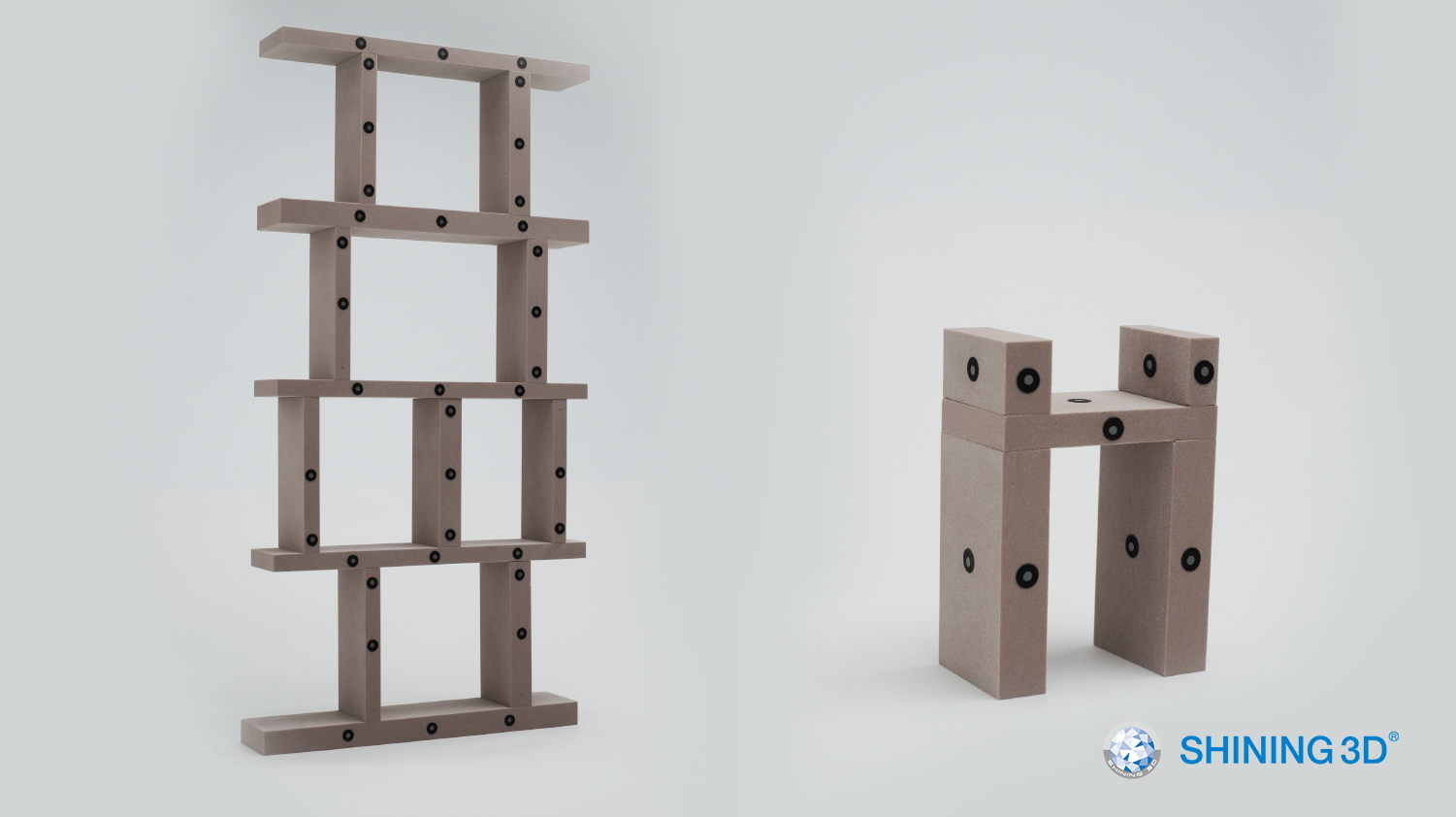
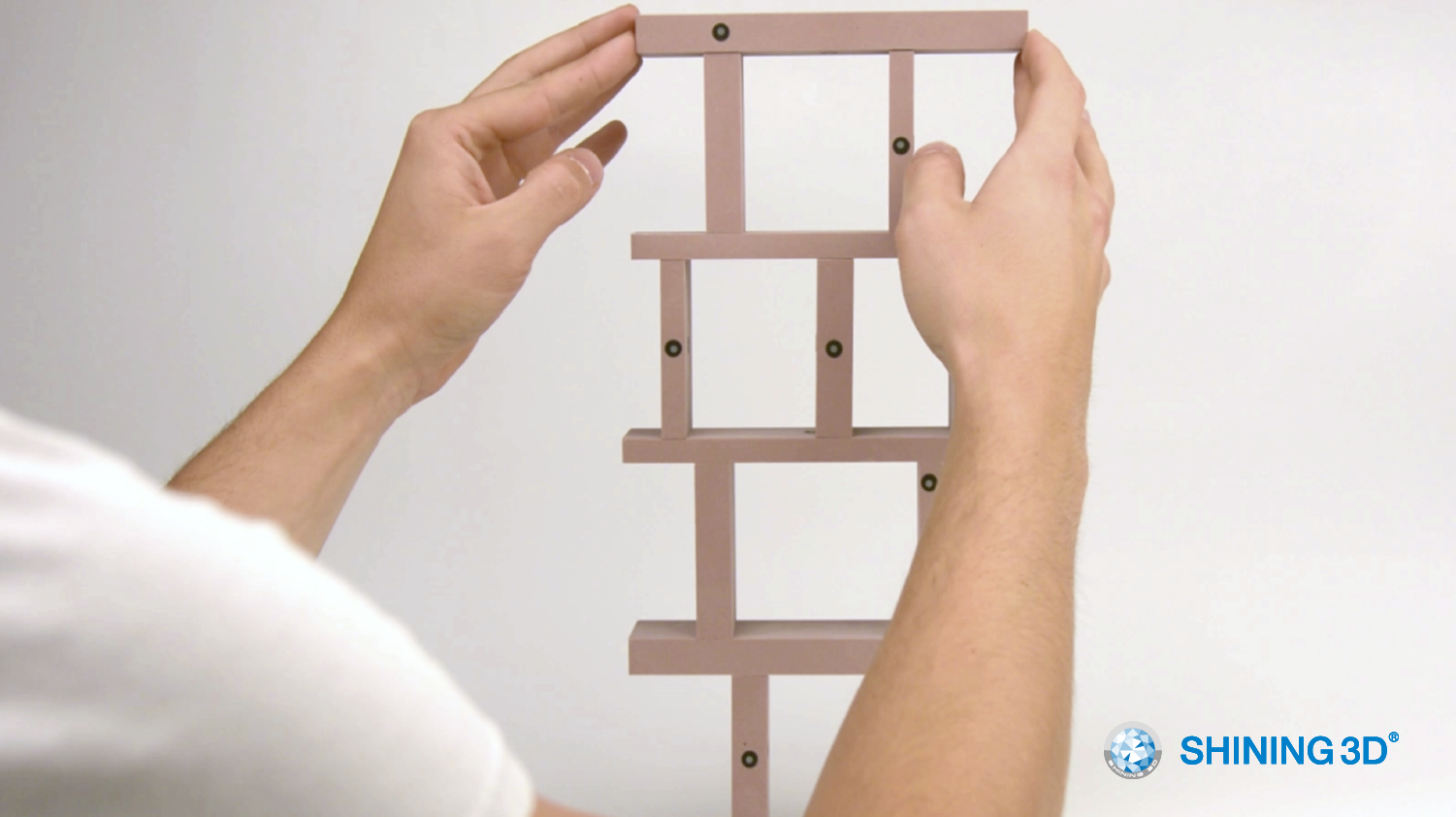
In this step, the red, wooden structures are the main players besides the designer number one: the human. Actually each of these structures is manually built with wooden bricks which are in proportion one to another. By using this modular system of shapes Matteo has created temporary structures, always on a desk size.
Step 1 emphasizes the intuitiveness, the creative part of building with one´s own hands. One could basically build any kind of shape with the bricks as they can be simply stacked in any way possible. The shapes are the disassemble “prototypes” of the main structures used in the further process.
STEP2 – SCANNING
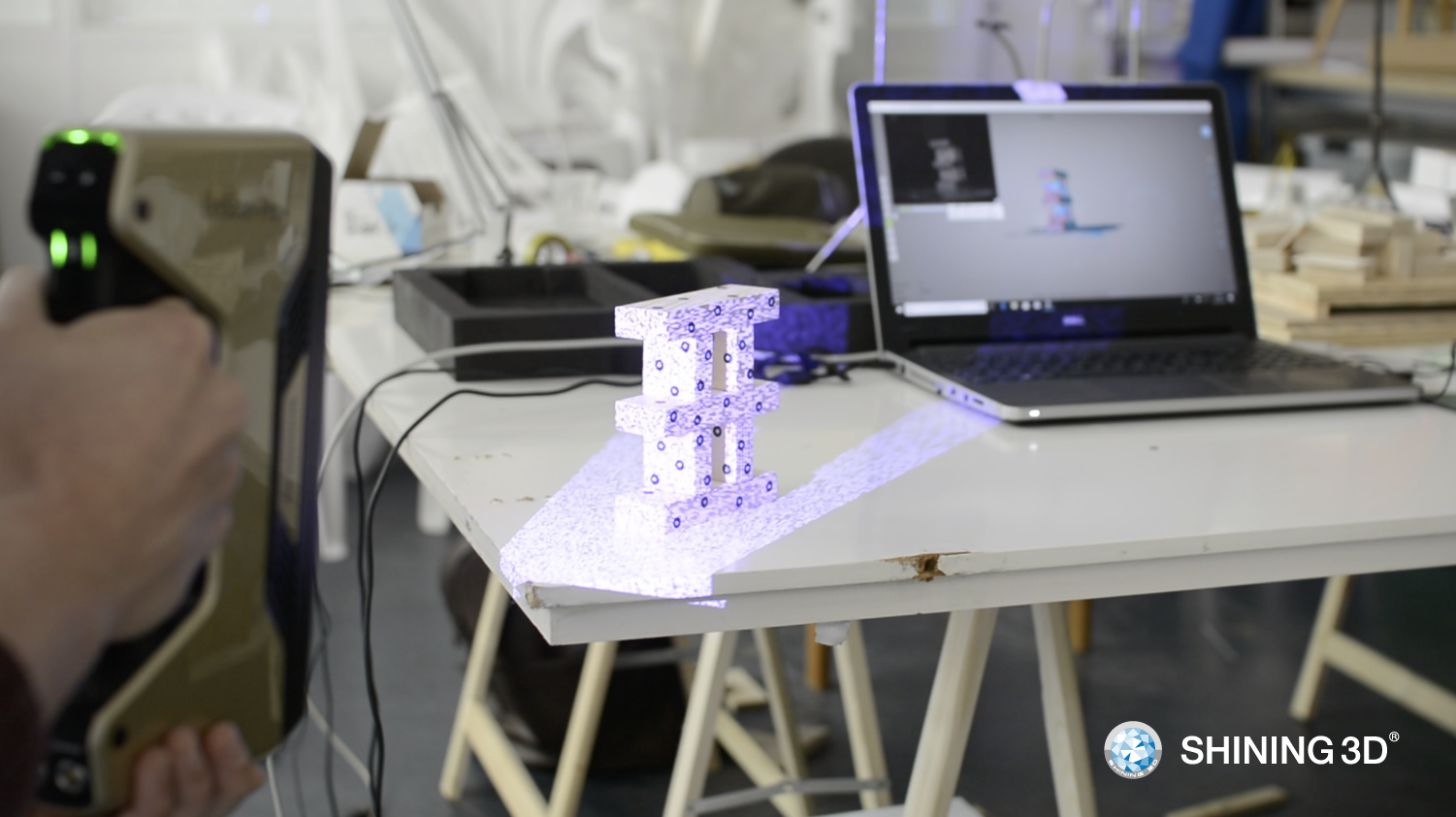
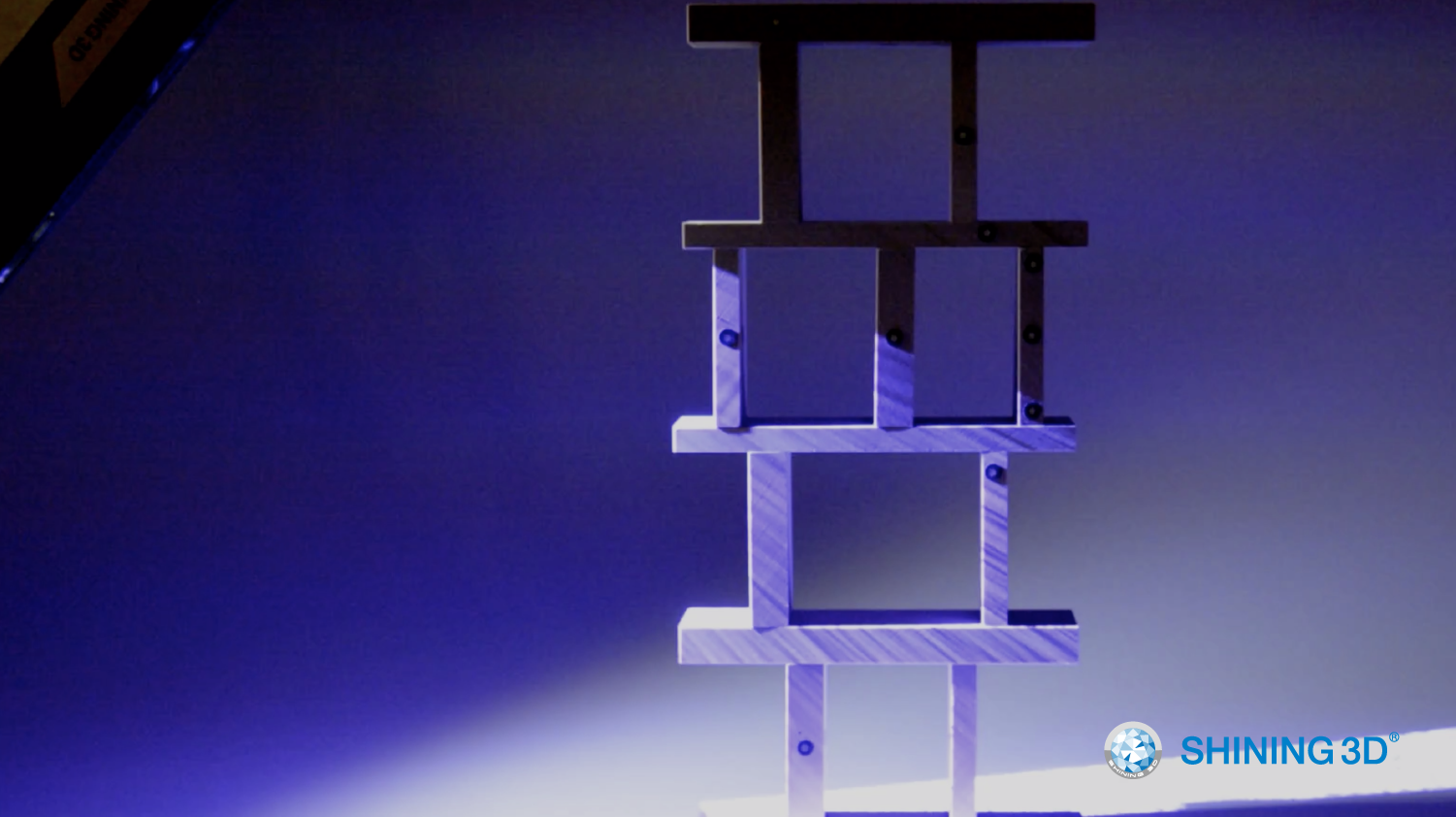
In the second step, the built shapes are being digitized my means of the SHINING 3D Handheld 3D Scanner.
“The real power of the Scanner is, that it gives you a digital version of something analog, and what you usually do with 3D-printing is the opposite. You start with the computer and then print the analog version. By discovering the method of 3D-Scanning I realized that you can not only design on a screen, but you can also design on a desk and then bring it to a Screen instead of doing the opposite. Usually we start from the screen to go to the desk, now my idea is to start from the desk, go to the screen and finally get back to the desk – people are really not familiar with this workflow yet.”
STEP3 – PRINTING
The vast majority of the people have started to understand 3D-Printing. But the most common known printing technology in the heads of the people is still desktop FDM-printing. Who could imagine that objects of this size have been built in one piece by the technology of Additive Manufacturing?
The basic design is the structure built by Matteo with the wooden bricks but the result has a completely different skin regarding the material. Through this process, although the shape remains the same, it becomes a new object.
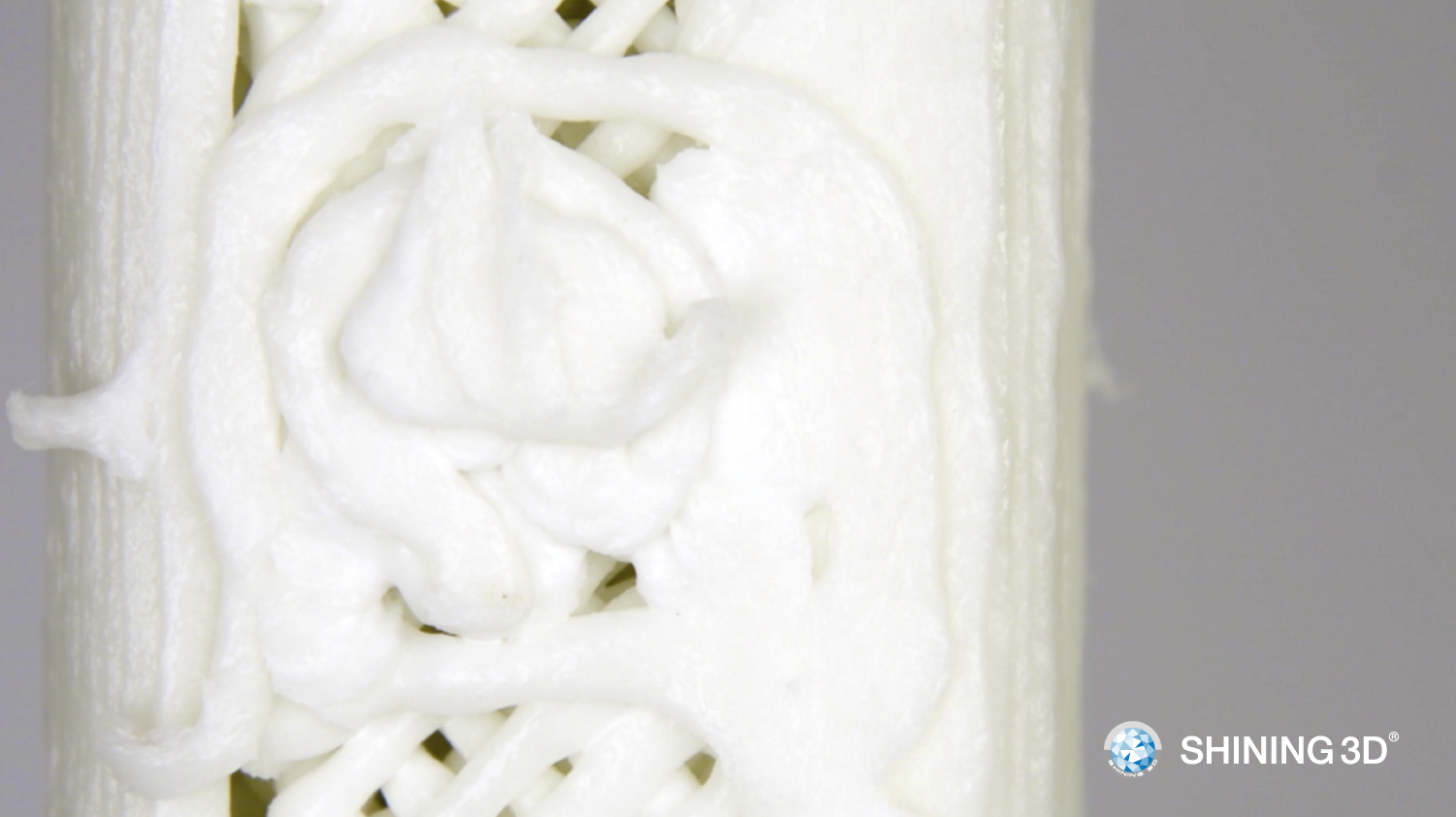
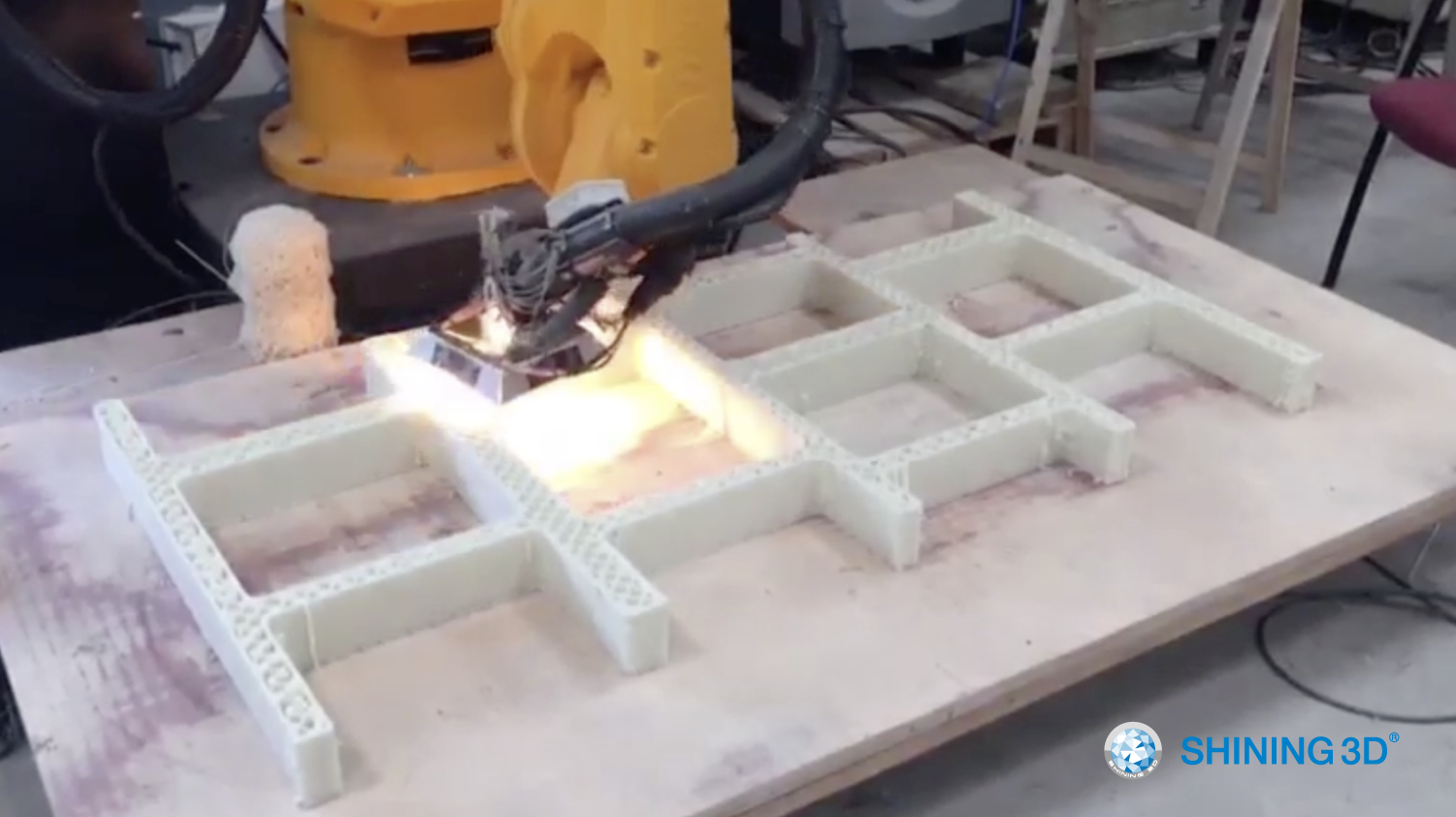
PLANS FOR THE FUTURE
During my experience with EinScan, I noticed many aspects of the 3D-Scanning Technology which could be implemented in my design method in order to create and develop new and different material. I see a close relationship between 3D-Scanning and 3D-Printing, especially with SLS and SLA printing techniques. The level of detail captured by the Scanner can easily be materialized by these printing technologies without any loss of it, enhancing the true power and potential of the Scanning Technology. In the coming 6 months, I will attend various design events and fairs; IMM Cologne, OBJECT Rotterdam and Milan Design Week.
Matteo´s project will run in several competitions and we are very curious about the further outcome of his extraordinary ideas.
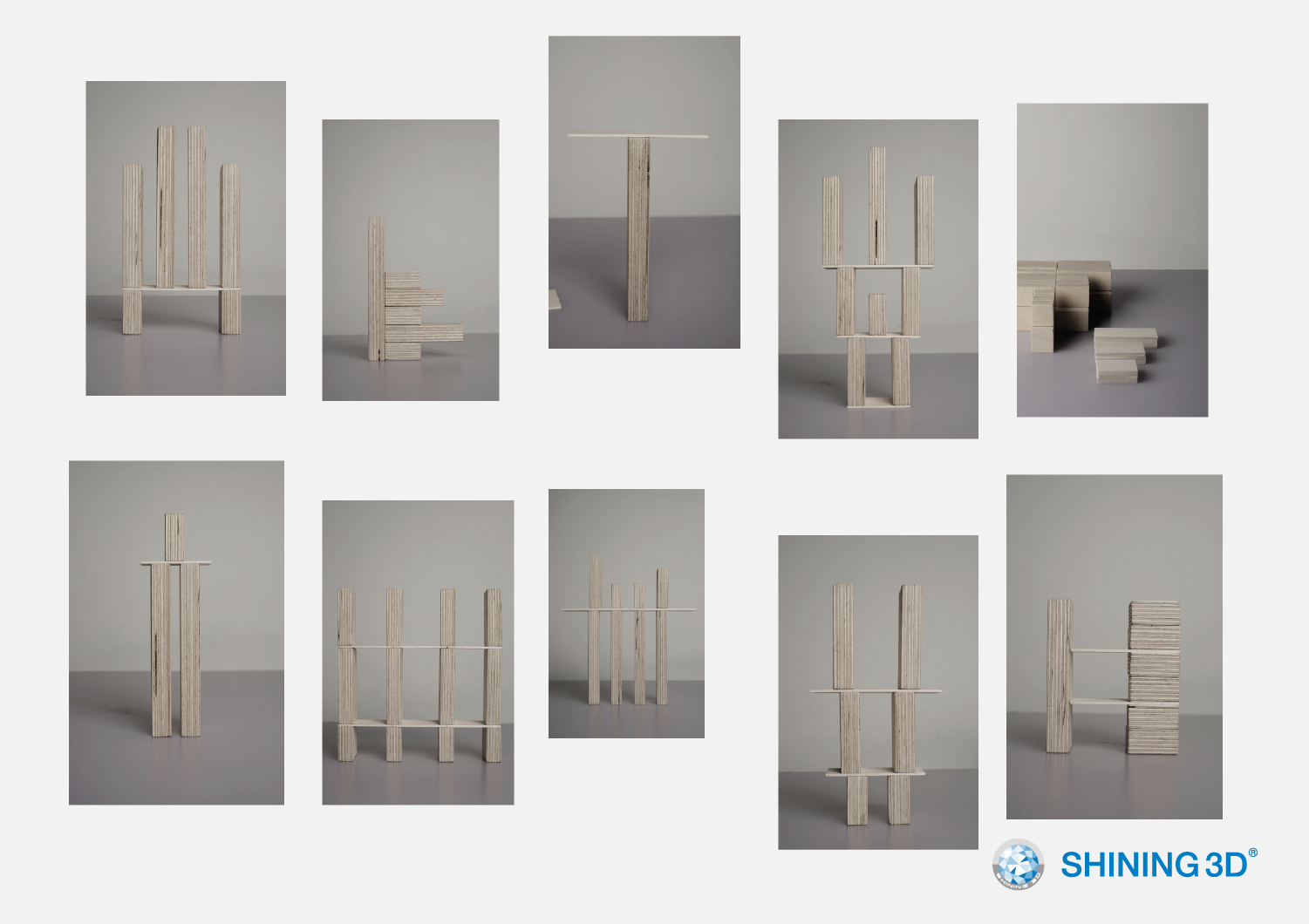
MATTEO DAL LAGO
If you are interested in Matteo´s artwork and his cooperation with SHINING 3D, you can check out his website www.matteodallago.com and Instagram @matteodallago





